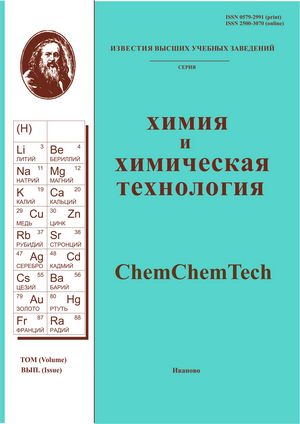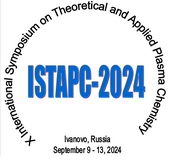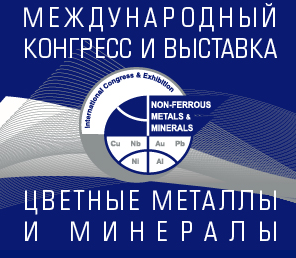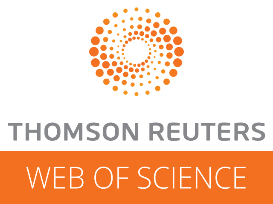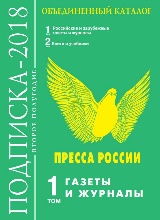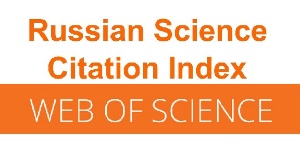ФАЗОВЫЕ ПРЕВРАЩЕНИЯ ЭЛЕМЕНТОВ IV ГРУППЫ: УГЛЕРОД, КРЕМНИЙ, ГЕРМАНИЙ ПРИ ВОЗДЕЙСТВИИ ЦИКЛИЧЕСКИХ НАПРЯЖЕНИЙ ДО 6 ГПа
Аннотация
В работе экспериментально показано, что для алмаза, кремния и германия при температурах ниже 420 К и циклических напряжениях меньше 6 ГПа наблюдается пластическая деформация механическим двойникованием. Циклическое нагружение образцов осуществлялось в планетарной мельнице. Обработка порошков различных материалов в планетарной мельнице широко используется в настоящее время для производства наноструктурных материалов. Такая обработка способствует измельчению, образованию дефектов и метастабильных фаз высокого давления в различных порошках. Наноструктурные кремний, германий и алмаз являются перспективными материалами для термоэлектроники, производства мембран и других применений. Наличие дефектов влияет на особенности их зонной структуры. Структура и свойства всех трех материалов зависят от условий обработки. В настоящей работе методами просвечивающей электронной микроскопии высокого разрешения на приборе JEM-2010 исследовали по отдельности структуру порошков германия и кремния после их обработки в планетарной мельнице Fritsch Planetary Micro Mill PULVERISETTE 7 premium line в смеси с частицами алмаза (5-15% по массе). Длительность обработки составляла 120 мин (цикл обработки: 1 мин размола и 3 мин охлаждения), максимальная температура образца не превышала 420 К. В результате обработки в элементах IV группы были обнаружены двойники и дефекты упаковки по плоскости {111}. Было установлено, что кроме исходной фазы кремния Si-I и германия Ge-I образцы содержали фазы высокого давления, такие как: Si-IV, Ge-IV и двойники. Также было обнаружено образование политипа 9R в кремнии и германии.
Литература
Rödl C., Sander T., Bechstedt F., Vidal J., Olsson P., Laribi S., Guillemoles J.-F. Wurtzite silicon as a potential
absorber in photovoltaics: Tailoring the optical absorption by applying strain. Phys. Rev. B. 2015. V. 92. P. 45207. DOI: 10.1103/PhysRevB.92.045207.
Raffy C., Furthmüller J., Bechstedt F. Properties of hexagonal polytypes of group-IV elements from first-principles calculations. Phys. Rev. B. 2002. V. 66. P. 75201. DOI: 10.1103/PhysRevB.66.075201.
Bandet J., Despax B., Caumont M. Vibrational and electronic properties of stabilized wurtzite-like silicon. J. Phys. D. Appl. Phys. 2002. V. 35. N 3. P. 234-239. DOI: 10.1088/0022-3727/35/3/311/meta.
Ovsyannikov D. A., Popov M.Y., Buga S.G., Kirichenko A.N., Tarelkin S. A., Aksenenkov V.V., Tat’yanin E.V., Blank V.D. Transport properties of nanocomposite thermoelectric materials based on Si and Ge. Phys. Solid State. 2015. V. 57. P. 605-611. DOI: 10.1134/S1063783415030208.
Koch C.C. Structural nanocrystalline materials: an overview. J. Mater. Sci. 2007. V. 42. N 5. P. 1403-1414. DOI:
1007/s10853-006-0609-3.
Kulnitskiy B., Annenkov M., Perezhogin I., Popov M., Ovsyannikov D., Blank V. Mutual transformation between crystalline phases in silicon after treatment in a planetary mill: HRTEM studies. Acta Crystallogr. Sect. B
Struct. Sci. Cryst. Eng. Mater. 2016. V. 72. P. 733-737. DOI: 10.1107/S2052520616011422.
Tonkov E.Yu. Phase Transformations of Elements under High Pressure. M.: Nauka. 1979. 192 p. (in Russian).
Mujica A., Rubio A., Munoz A., Needs R.J. High-pressure phases of group-IV, III–V, and II–VI compounds. Rev. Mod. Phys. 2003. V. 75. N 3. P. 863-912. DOI: 10.1103/RevModPhys.75.863.
Haberl, B., Guthrie M., Malone B. D., Smith J.S. Sinogeikin S. V., Cohen M. L., Williams J. S., Shen G.,
Bradby J. E. Controlled formation of metastable germanium polymorphs. Phys. Rev. B. 2014. V. 89. N 14. P. 144111. DOI: 10.1103/PhysRevB.89.144111.
Kwon Y.-S., Gerasimov K.B., Yoon S.-K. Ball temperatures during mechanical alloying in planetary mills. J. Alloys Compd. 2002. V. 346. P. 276-291. DOI: 10.1016/S0925-8388(02)00512-1.
El-Eskandarany M.S. Mechanical alloying: For fabrication of advanced engineering materials. NY: Noyes Publications. 2013. 242 p.
Gusev A.I., Kurlov A.S. Production of nanocrystalline powders by high-energy ball milling: model and experiment. Nanotechnology. 2008. V. 19. N 26. P. 265302. DOI: 10.1088/0957-4484/19/26/265302.
Kulnitskiy B., Perezhogin I., Dubitsky G., Blank V. Polytypes and twins in the diamond–lonsdaleite system
formed by high-pressure and high-temperature treatment of graphite. Acta Crystallogr. Sect. B Struct. Sci. Cryst.
Eng. Mater. 2013. V. 69. P. 474-479. DOI: 10.1107/S2052519213021234.
Kulnitskiy B.A., Perezhogin I.A., Popov M.Y., Ovsyannikov D.A., Blank V. D. Peculiarities of the Twinning in
Silicon during Ball Milling in the Presence of Two Different Materials. Symmetry. 2018. V. 10. P. 200. DOI: 10.3390/sym10060200.
Gordeeva T.A., Ovsyannikov D.A., Popov M.Yu., Kulnitskiy B.A., Blank V.D. Structure of Germanium Treated
in a Planetary Mill. FTT. 2020. V. 62. N 10. P. 1765–1768 (in Russian). DOI: 10.1134/S106378342010008X.
Fissel A., Bugiel E., Wang C.R., Osten H.J. Formation of twinning-superlattice regions by artificial stacking of Si layers. J. Cryst. Growth. 2006. V. 290. N 1. P. 392-397. DOI: 10.1016/j.jcrysgro.2006.02.009.
Mylvaganam K., Zhang L.C. Nanotwinning in monocrystalline silicon upon nanoscratching. Scr. Mater. 2011. V. 65. P. 214-216. DOI: 10.1016/j.scriptamat.2011.04.012.
Ruffell S., Bradby J.E., Williams J.S. Formation and growth of nanoindentation-induced high pressure phases in
crystalline and amorphous silicon. J. Appl. Phys. 2007. V. 102. N 6. P. 063521. DOI: 10.1063/1.2781394.
Zhu Y.T., Liao X.Z., Wu X.L. Deformation twinning in nanocrystalline materials. Prog. Mater. Sci. 2012. V. 7. N 1.
P. 1-62. DOI: 10.1016/j.pmatsci.2011.05.001.
Gordeeva T., Kulnitskiy B., Ovsyannikov D., Popov M., Blank V. Twinning formation in nanodiamonds after treatment in a planetary mill: HRTEM studies. IOP Conference Series: Materials Science and Engineering. 2019.
V. 693. P. 12022. DOI: 10.1088/1757-899X/693/1/012022.
Gordeeva T., Kulnitskiy B., Ovsyannikov D., Popov M., Blank V. Plastic deformation of diamond by mechanical
twinning at temperatures significantly lower than Debye temperature. Chem. Phys. Lett. 2019. V. 730. P. 138-140. DOI: 10.1016/j.cplett.2019.05.057.
Lifshitz Y., Duan X.F., Shang N., Li Q., Wan L., Bello I., Lee T. Epitaxial diamond polytypes on silicon. Nature.
V. 412. N 6845. P. 404.
Sowa H., Koch E. A proposal for a transition mechanism from the diamond to the lonsdaleite type. Acta Cryst. A: 2001. V. 57. N 4. P. 406-413. DOI: 10.1107/S0108767301003087.
Fissel A., Bugiel E., Wang C.R., Osten H.J. Formation of twinning-superlattice regions by artificial stacking of Si layers. J. Cryst. Growth. 2006. V. 290. N 2. P. 392-397. DOI: 10.1016/j.jcrysgro.2006.02.009.
Zhang J.Y., Ono H., Uchida K., Nozaki S., Morisaki H. Wurtzite Silicon Nanocrystals Deposited by the Cluster‐Beam Evaporation Technique. Phys. Status Solidi. 2001. V. 223. N 1. P. 41-45. DOI: 10.1002/1521- 3951(200101)223:1<41::AID-PSSB41>3.0.CO;2-V.
Fissel A., Bugiel E., Wang C.R., Osten H.J. Formation of Si twinning-superlattice: First step towards Si polytype
growth. Mater. Sci. Eng., B. 2006.V. 134. N 2-3. P. 138-141. DOI: 10.1016/j.mseb.2006.06.046.
Cerva H. High-resolution electron microscopy of diamond hexagonal silicon in low pressure chemical vapor
deposited polycrystalline silicon. J. Mater. Res. 1991. V. 6. N 11. P. 2324-2336. DOI: 10.1557/JMR.1991.2324.
Zhang Y., Iqbal Z., Vijayalakshmi S., Qadri S., Grebel H. Formation of hexagonal-wurtzite germanium by pulsed laser ablation. Solid State Commun. 2000. V. 115. N 12. P. 657-660. DOI: 10.1016/S0038-1098(00)00259-3.
Vandeperre L.J., Giuliani F., Lloyd S.J., Clegg W.J. The hardness of silicon and germanium. Acta Mater. 2007. V. 55. N 18. P. 6307-6315. DOI: 10.1016/j.actamat.2007.07.036.
Müllner P. Disclination models for deformation twinning. Solid State Phenomena. 2002. V. 87. P. 227–238. DOI:10.4028/www.scientific.net/SSP.87.227.
Kiefer F., Hlukhyy V., Karttunen A.J. Fässler T.F., Gold C., Scheidt E-W., Scherer W., Nylén J., Häussermann U. Synthesis, structure, and electronic properties of 4Hgermanium. J. Mater.Chem. 2010. V. 20. N 9. P. 1780-1786. DOI: 10.1039/B921575A.
Christian J.W., Mahajan S. Deformation twinning. Prog. Mater. Sci. 1995. V. 39. P. 1-157. DOI: 10.1016/0079-6425(94)00007-7.
Ogata S., Li J., Hirosaki N., Shibutani Y., Yip S. Ideal shear strain of metals and ceramics. Phys. Rev. B. 2004 V. 70 P. 104104. DOI: 10.1103/PhysRevB.70.104104.
Ganchenkova M., Nieminen R.M. Mechanical Properties of Silicon Microstructures. Handbook of Silicon Based
MEMS Materials and Technologies. 2015. P. 263-303. DOI:10.1016/B978-0-12-817786-0.00009-8.

